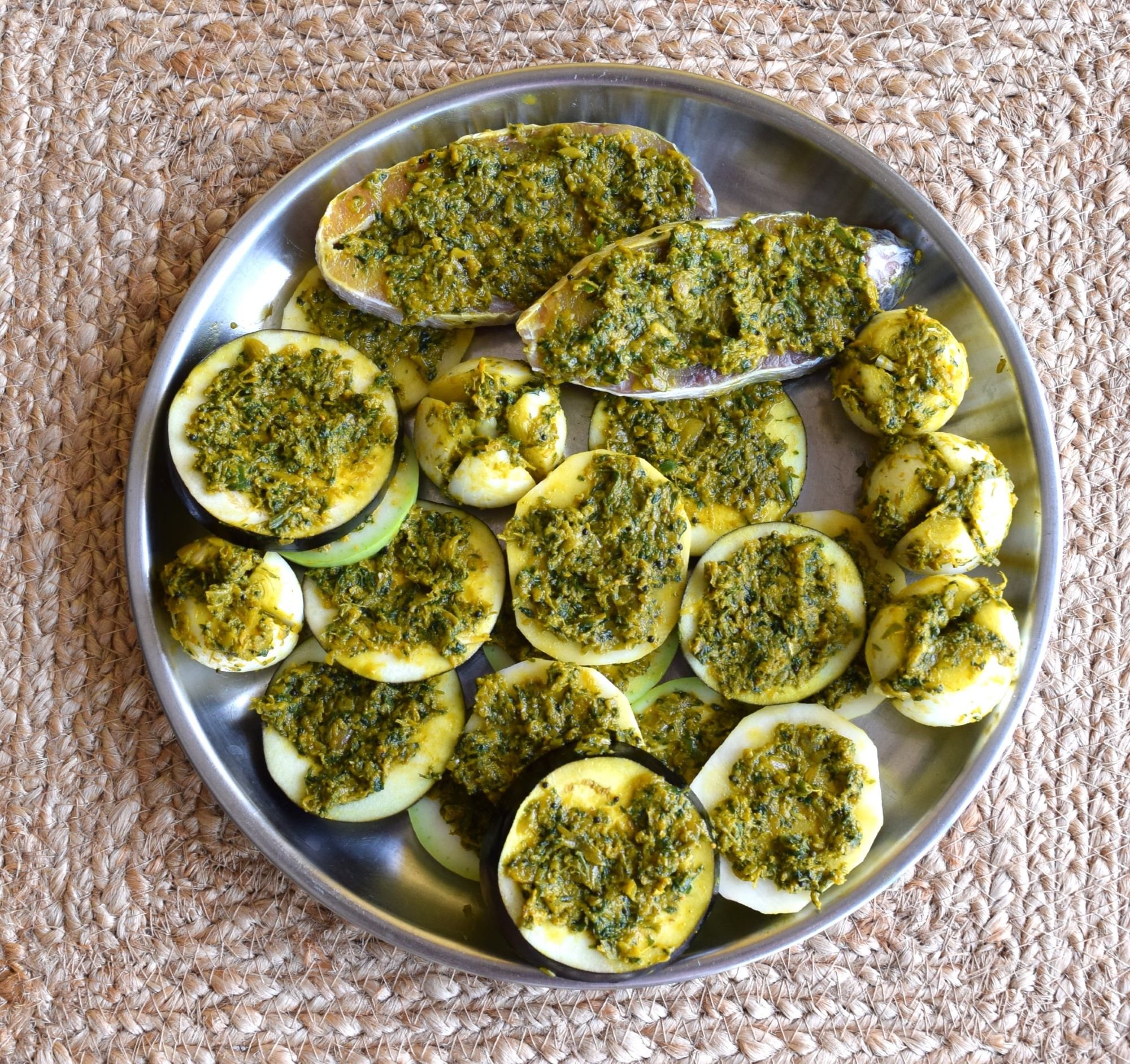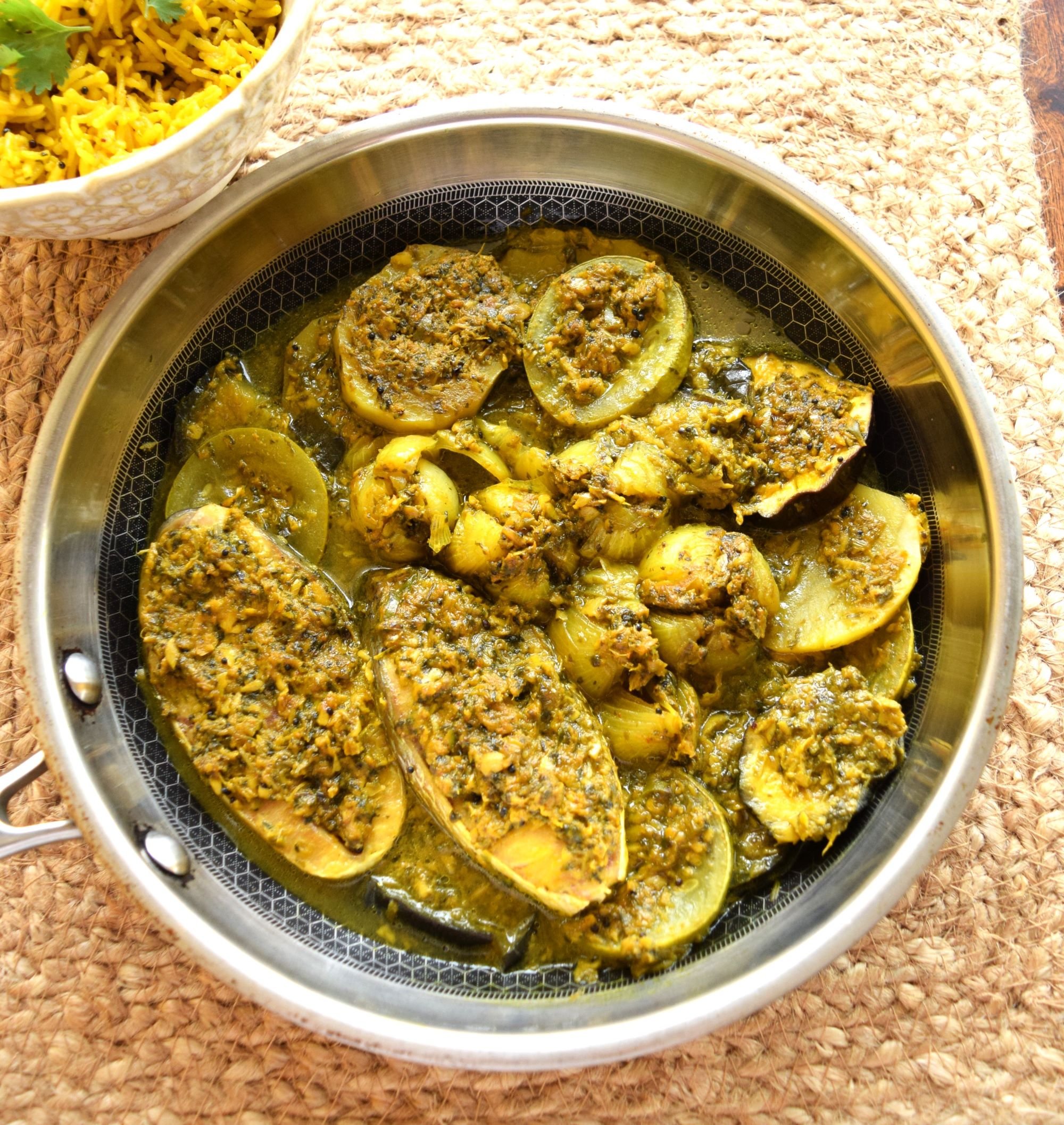Sonta is a Sindhi One-Pot Wonder Dish You Should Be Cooking

Reshma Sanghi makes a strong case in defence of the one-pot meal. From tagine, to coq au vin and sonta, she digs into her childhood memories to recreate a delicious Sindhi dish that stars a rich garlic masala.
As a young mother, my goal was to feed my kids healthy and nourishing meals. I could supervise breakfast and dinner, but lunch was often a quick snack in school, wolfed down in three minutes so they could spend the remaining 17 running and playing.
I tried my best to lure, bribe, plead, beg, even threaten them, with offers of wholesome meals in their tiffin. ‘Will you take dal chawal?’ ‘Eww, the whole classroom smells of dal.’ ‘Aloo Paratha?’ ‘Eww, the whole classroom smells of potatoes.’ ‘What about finger chips?’ ‘Yes! Extra for my friends too!’ Strange that those potatoes didn’t smell. But in the end, I’d focus all my efforts on dinner.
Those days I had just begun experimenting with food, and cookbooks were my nighttime read. A gifted collection of The Australian Women’s Weekly cookbooks became my go-to resource for potential dinner ideas. I particularly loved Casseroles and Other Delicious One-pot Wonders. The first time I made a dish called Hungarian Goulash from the book, empty bowls were returned to the kitchen. They had gobbled their meal with gusto (even the carrots and tomatoes!). When Jamie Oliver, Nigella Lawson and Yotam Ottolenghi arrived on the food scene with their cookbooks, there was a shift, from just making good food to making food that looked good too. They had recipes that were simple to follow with pretty, colourful pictures that made you want to just jump right into the pages. The dishes looked hearty, warm, cozy, delicious and inviting at the same time.
One-pot meals soon became the norm at dinner — tagine, coq au vin, lasagna, moussaka — with a mix of veggies and meat. Red and yellow peppers had just entered the market in the 90s and so I made stuffed peppers with rice and beans, gumbo with peppers, paella with peppers and prawns, paneer steaks topped with caponata. It helped that I could show the kids pictures of the recipes from the cookbooks.
A Sindhi Sunday Specialty
The next step in my battleplan was to introduce the kids to Indian food, and more specifically, Sindhi food from my childhood. Taking a cue from my success with one-pot meals, I decided to try one of my favourite Sindhi dishes, sonta. Growing up, my mother made it on occasional Sundays (and only at lunch time because the prep was laborious and time consuming, and after wolfing it down we had to be horizontal for a couple of hours, at a minimum).
The key to sonta is a classic paste called thoom (garlic masala) that is used in several other Sindhi dishes. My mother would pound together a vibrant paste of garlic, coriander and green chillies with a generous amount of turmeric that would leave your fingers yellow for a good two days. Generous lashes of the paste are applied on fish like surmai or rawas. Elsewhere, potatoes, eggplant, bottle gourd (doodhi) and baby onions are cut into thick roundels, and scored. The thoom was then massaged into these slits. All these ingredients are placed in a pan. The vegetable cylinders vie for space, nestled like little babies against the fish. The baby onions take advantage of their cuteness to snatch a place of pride in that pan. You mix in an extra bit of the paste with a little water and sprinkle it over the medley. With the cover on, you let time do its bit. In another pan, rice is cooked with some more paste that dyes it yellow. There’s roasted papad on the side to complete the meal.
Because my mother would serve it in the cooking pan itself with rice on the side along with a big mountain of roasted papad, I did the same. The first time I made it, my kids watched in confusion as I placed the pan on the table. The aroma of fish and garlic combined with the heady scent of turmeric spread through the entire house. The sheer variety of ‘things’ in the pan took them by surprise. I watched my kids relishing it the first time I made it for them, with great pride, their silence only broken by the crushing and crunching of papad in between bites. I had arrived!
I wonder what it is about one-pot dishes or dishes that are plated and served individually. When I opened my restaurant and menu discussions were ongoing, the first thing my daughter suggested was Hot Bowls & Cold Bowls. This quickly became our most popular category. The bowls were colourful, hearty and appetizing. We had everything from a Penang curry bowl with rice & veggies, a Za’atar chicken with cauliflower couscous and hummus, a Wasabi black rice bowl, a Middle Eastern bowl with falafel, hummus, pita, tabbouleh, and even a much-loved Parsi Dhansak Bowl. We introduced a Dal Baati Bowl on one of our weekend specials (and had to repeat it over the next three weekends on popular demand!).
Dal Baati bowl
Seyal Baida
Another innovative one-pot Sindhi dish I ate growing up is Seyal Baida or as I call it — Sindhi Shakshuka. In a flat, wide pan, seyal masala is prepped with loads of onions, tomatoes and some dry spices like coriander powder, turmeric and chilli powder. Whole eggs are cracked into little nests in the masala. The pan is covered and the eggs are cooked on low heat for 5-7 minutes. Add a few slices of bread or pav on the side, and you have breakfast for dinner.
Many classic Indian favourites are examples of one-pot cooking, from the bisi bele bhath, to kichdi, pav bhaji and of course the quintessential biryani. There is something about a hearty bowl of food placed in front of you that makes you feel special — almost as though the chef has thought of you and you alone. Who can resist a combination of beautifully plated food full of flavour and taste? Certainly, not me.
Sonta is typically served with yellow rice and papad.
RECIPE FOR SINDHI SONTA
Ingredients
100 g eggplant, cut into roundels
100 g potato, peeled and cut into roundels
100 g bottle gourd, peeled and cut into roundels
5-6 baby onions, peeled
2-3 slices of fish
2-3 tbsp oil
For the thoom paste: Pound together 50gm garlic, and coriander leaves; 3-4 green chillies, 1 tbsp turmeric powder, ½ tsp chilli powder till it becomes a coarse paste. If using a blender, grind it coarsely with as little water as possible. Add salt after the paste is ready.
Method
Score the eggplant, potatoes and bottle gourd in a criss-cross pattern ensuring the knife doesn’t cut through the pieces. Do the same for the onions but cut them slightly deeper.
Spread a little paste on each vegetable, and fish; use some extra paste for the onions.
In a wide flat bottomed pan, heat the oil and place the vegetables spreading them evenly. Add 1 cup of water taking care not to dislodge the paste on the veggies. Cover and cook on low for 10 minutes.
Place the fish in the pan. Cover again and cook for another 10 minutes.
Meanwhile, soak half cup of rice for 30 minutes. In a kadhai, heat 1 tbsp oil, add 1 tsp mustard seeds. When they start spluttering, add 1 tsp of the paste and stir for 5-7 seconds. Add the rice, stir for another 8-10 seconds and add the water and salt to taste. As soon as the water starts simmering, lower the heat and cover the rice. Cook till the rice is done.
Enjoy the Sonta with the yellow rice and papad.
Reshma Sanghi is a restaurateur, caterer and food consultant with over 30 years of experience in the food industry. She is passionate about her Sindhi heritage and is currently in the process of writing her first Sindhi cookbook.
ALSO ON GOYA














